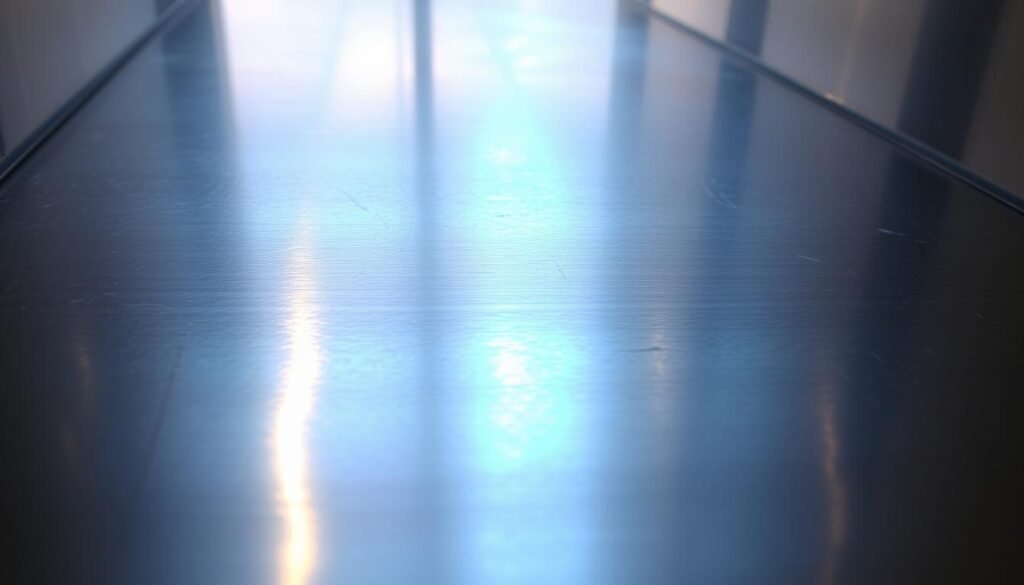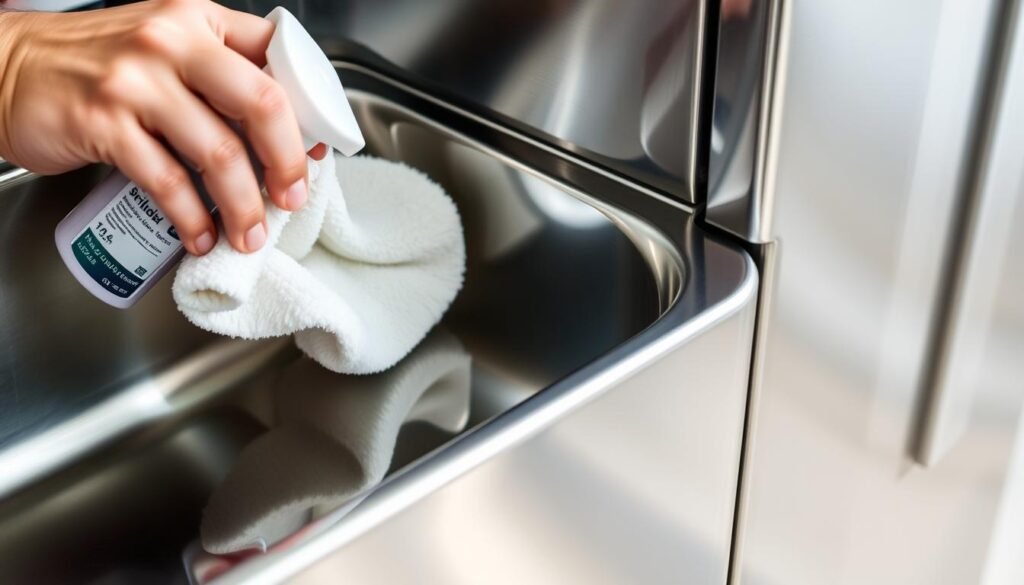Stainless steel is a popular choice for various applications due to its durability and resistance to corrosion.
It is an alloy of iron and chromium, known for its ability to withstand different environmental conditions without tarnishing or rusting. The interaction between its alloying elements and the environment forms a thin protective film, preserving its appearance.
Many consumers wonder if stainless steel will maintain its original color over time. Understanding the properties of this material helps clarify its color stability compared to other metals.
This article will explore the science behind stainless steel’s durability and the conditions that might affect its appearance, providing insights into maintaining its original look.
Understanding Stainless Steel Composition
At its core, stainless steel is an alloy that combines iron, carbon, and chromium to achieve its characteristic strength and resistance. This alloy is primarily made up of iron and contains at least 10.5% chromium, which is crucial for its corrosion-resistant properties.
The presence of chromium in stainless steel leads to the formation of a passive chromium oxide layer on its surface when exposed to oxygen. This invisible layer acts as a protective barrier that prevents steel from oxidizing and corroding, even when the surface is scratched.
What Makes Stainless Steel “Stainless”
The “stainless” quality of stainless steel is attributed to its chromium content. The chromium oxide layer that forms naturally is self-healing and maintains the integrity of the material. Different grades of stainless steel, such as 304 and 316, contain varying amounts of other elements like nickel and molybdenum, enhancing specific properties.
This unique composition makes stainless steel a preferred metal for various applications, offering a combination of strength, durability, and resistance to corrosion.
Will Stainless Steel Change Color Over Time?
When it comes to maintaining its original appearance, stainless steel stands out among other metals. The question of whether steel changes color over time is a common concern among consumers.
Under normal conditions, high-quality stainless steel maintains its color indefinitely due to the stable chromium oxide layer that forms on its surface. This characteristic makes it highly valued in various applications.
The Science Behind Stainless Steel’s Color Stability
The stability of stainless steel‘s appearance can be attributed to its resistance to oxidation processes. Unlike metals that tarnish or develop patina, steel resists reactions with oxygen, preserving its silver-gray appearance.
- The chromium oxide layer reflects light consistently, maintaining the metal’s original look.
- Environmental factors may temporarily affect the appearance, but these changes are typically superficial and reversible with proper cleaning.
- The color stability of stainless steel is crucial in applications where aesthetic consistency is key.
Common Causes of Color Changes in Stainless Steel
Understanding the causes of color changes in stainless steel is crucial for maintaining its appearance and functionality. Stainless steel, known for its durability and resistance to corrosion, can still undergo changes in color when exposed to certain conditions.
The presence of chromium in steel plays a significant role in its resistance to corrosion. However, when chromium reacts with oxygen in the air, it forms a thin protective layer that can change color under high heat, creating a rainbow effect.
Heat-Induced Rainbow Discoloration
High heat is a primary cause of the rainbow-like discoloration observed on the surface of stainless steel. This occurs when steel is exposed to temperatures between 400-700°F (204-371°C), causing the chromium oxide layer to thicken and refract light differently.

- The rainbow effect is common in cookware and exhaust systems where stainless steel is regularly exposed to high temperatures day in and day out.
- Although the discoloration may be aesthetically concerning, it does not compromise the structural integrity or corrosion resistance of the steel.
- Exposure to water and other environmental factors can also influence the color stability of stainless steel, but heat remains the most significant factor.
Different Types of Stainless Steel and Their Color Stability
Different grades of stainless steel exist, and their compositions significantly affect their properties and appearance. The various types of stainless steel are categorized based on their microstructure and composition.
The color stability of stainless steel is influenced by its chromium and nickel content. Generally, higher chromium and nickel content enhance the material’s resistance to corrosion and color changes.
304 vs. 316 Stainless Steel Comparison
The 304 grade stainless steel, containing 18% chromium and 8% nickel, is the most common type and offers excellent color stability in most environments. In contrast, the premium 316 grade, which includes molybdenum in addition to chromium and nickel, provides superior resistance to color changes, even in harsh environments.
Austenitic stainless steels, like the 300 series, maintain their appearance better than ferritic varieties due to their higher nickel content. Martensitic stainless steels are more susceptible to color changes due to their lower chromium content. Duplex stainless steels combine the benefits of austenitic and ferritic types, offering excellent color stability and enhanced strength.
Stainless Steel in Everyday Applications
With its unique combination of strength, corrosion resistance, and aesthetic appeal, stainless steel has become an integral material in everyday life. Its durability and low maintenance requirements make it a preferred choice for various applications.
Cookware and Kitchen Appliances
Stainless steel is particularly popular in kitchen applications due to its heat resistance and food-safe properties. It is ideal for cooking acidic foods without the risk of color transfer or metallic taste contamination.
The versatility of steel is evident in its widespread use across different sectors. Some of the key applications include:
- Kitchen applications, such as pots, pans, and appliances, benefiting from its heat resistance and non-reactive nature.
- Jewelry, where stainless steel offers an affordable and durable alternative to precious metals like silver and gold, suitable for daily wear.
- Architectural applications, leveraging its aesthetic consistency and weather resistance for exterior cladding and structural elements.
In industrial settings, steel is relied upon for its corrosion resistance and strength, making it ideal for equipment that must withstand harsh chemicals and extreme conditions while maintaining its appearance and functionality day in and day out.
Proper Maintenance to Preserve Stainless Steel’s Appearance
Stainless steel’s durability and aesthetic appeal can be preserved with the right care. Maintaining its appearance not only enhances its longevity but also ensures it continues to look its best in various applications.
Regular Cleaning Techniques
Regular cleaning is essential to maintain the appearance of stainless steel. Using mild soap and warm water is sufficient for most applications. It’s also important to wipe in the direction of the grain to prevent scratches.
- Cleaning with mild soap and warm water maintains stainless steel‘s appearance.
- Wiping in the grain’s direction prevents scratches and removes contaminants.
- Avoiding prolonged contact with salt and acidic foods preserves the finish.
For optimal care, stainless steel jewelry should be cleaned monthly and kept away from chlorinated water. Applying a specialized cleaner can enhance its appearance and provide protection against fingerprints.
| Maintenance Task | Frequency | Benefit |
|---|---|---|
| Cleaning with mild soap and warm water | Regularly | Maintains appearance |
| Wiping in the direction of the grain | After each use | Prevents scratches |
| Avoiding harsh chemicals | Ongoing | Preserves original finish |

How to Remove Discoloration from Stainless Steel
Stainless steel items often lose their original shine due to discoloration, but this can be restored. Discoloration can occur due to various factors, including heat exposure, which can cause a rainbow effect on the surface of the steel.
Effective Methods for Restoration
One effective way to remove discoloration is by using a solution of white vinegar and water. The acidity in the vinegar helps break down the oxidized layer that causes the discoloration.
- Mix diluted white vinegar with water and scrub the affected area with a non-abrasive sponge to remove heat-induced rainbow discoloration.
- For more stubborn cases, a paste made from baking soda and water can be applied with gentle circular motions to restore the original appearance.
- Commercial stainless steel cleaners are also available, containing mild acids that are specifically formulated to remove discoloration without damaging the protective chromium oxide layer.
After cleaning, it’s crucial to thoroughly rinse and dry the stainless steel surface to prevent water spots and new discoloration from forming. For valuable or delicate items, considering professional cleaning services can ensure the original finish is safely restored.
Comparing Stainless Steel to Other Metals
Artists and consumers alike consider multiple metals and materials for various applications, with stainless steel being a popular choice. When evaluating materials for jewelry or other uses, several factors come into play, including durability, maintenance requirements, and aesthetic appeal.
One key comparison is between stainless steel and sterling silver. Sterling silver requires regular polishing to prevent tarnishing when exposed to air, whereas stainless steel maintains its appearance with minimal maintenance.
Stainless Steel vs. Sterling Silver
Sterling silver and stainless steel have different upkeep needs. While sterling silver jewelry may tarnish over time, stainless steel jewelry retains its shine with little effort. Other metals like aluminum are lighter but more prone to scratching and denting.
- Aluminum is another metal used in various applications; it’s lighter than stainless steel but more prone to scratching.
- Brass and copper develop patinas over time as they react with air and moisture, unlike stainless steel, which retains its original color.
In conclusion, stainless steel offers a durable and low-maintenance alternative to other metals, making it an attractive choice for many applications.
Conclusion: The Lasting Appeal of Stainless Steel
Stainless steel’s ability to maintain its appearance over time is a significant factor in its widespread adoption. Its remarkable color stability makes it an exceptional material for applications where maintaining appearance is crucial.
The combination of durability, corrosion resistance, and minimal care requirements explains why stainless steel remains popular across diverse industries, from architecture to fashion. While certain extreme conditions can cause temporary color changes, proper care and cleaning techniques can easily restore stainless steel to its original appearance.
As consumers become more informed about material properties, stainless steel’s lasting appeal continues to grow due to its sustainable nature, recyclability, and long-term value compared to other metals like silver. Whether in everyday items or sophisticated designs, stainless steel’s consistent appearance day after day contributes significantly to its enduring popularity.
